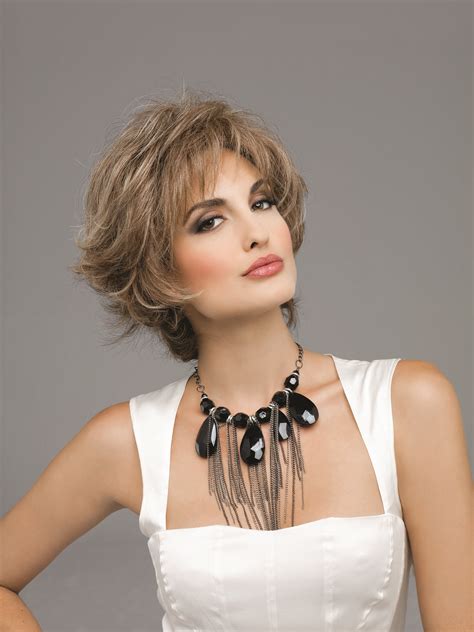Cancer treatments such as chemotherapy can lead to hair loss, affecting a patient’s appearance and self-esteem. Wigs provide an essential solution, offering comfort, privacy, and a sense of normalcy during this challenging time.

Navigating the Wig Journey
For chemo patients, choosing the right wig can be an overwhelming task. Here’s a guide to help you navigate this journey:
1. Determine Your Needs
Consider your hair loss pattern, lifestyle, and desired level of comfort. Choose wigs that match your natural hair color, texture, and cut, or experiment with new styles.
2. Explore Materials
- Synthetic Wigs: Affordable, durable, and low-maintenance.
- Human Hair Wigs: Natural look and feel, but require more care.
- Mixed Hair Wigs: Combine synthetic and human hair for a balance of affordability and natural appearance.
3. Find the Perfect Fit
Proper fit is crucial for comfort and security. Use a measuring tape to determine your head circumference and consider the cap construction of the wig.
4. Care for Your Wig
Regular maintenance keeps your wig looking its best. Use gentle shampoos, conditioners, and styling products, and avoid heat tools whenever possible.
Benefits of Wigs for Chemo Patients
1. Psychological Support
Wigs help patients cope with the emotional impact of hair loss, providing a sense of privacy and control over their appearance.
2. Physical Comfort
Wigs protect the scalp from sun, cold, and other irritants, reducing discomfort during treatment.
3. Improved Quality of Life
Wigs empower patients to feel confident and participate in social activities without self-consciousness.
Pain Points and Motivations
Pain Points:
- Hair loss can cause embarrassment and anxiety.
- Itching and scalp sensitivity can be uncomfortable.
- Finding the right wig can be challenging.
Motivations:
- Patients want to maintain their appearance and feel confident.
- They seek comfort and protection for their scalp.
- They desire a sense of normalcy and control.
Effective Strategies
1. Seek Professional Guidance
Consult with a healthcare professional or wig specialist to discuss your needs and find the best wig options.
2. Explore Resources and Support Groups
Connect with organizations and support groups that provide resources and support for chemo patients.
3. Practice Self-Care
Take care of your wig and your scalp regularly to enhance comfort and confidence.
4. Seek Emotional Support
Talk to loved ones, therapists, or support groups to process the emotional impact of hair loss.
Why Wigs Matter
Wigs for chemo patients are not just about aesthetics; they are essential tools for managing the physical, emotional, and social challenges of treatment. By providing comfort, privacy, and a sense of normalcy, wigs empower patients to navigate this difficult journey with dignity and resilience.
Table 1: Wig Types and Benefits
| Wig Type | Benefits |
|---|---|
| Synthetic | Affordable, durable, low-maintenance |
| Human Hair | Natural look and feel, versatile styling |
| Mixed Hair | Balance of affordability and natural appearance |
| Lace Front | Natural-looking hairline, less visible wefting |
Table 2: Wig Cap Constructions
| Cap Construction | Features |
|---|---|
| Monofilament Top | Sheer fabric that allows scalp to show through, creating the illusion of natural hair growth |
| Lace Front | Lace fabric at the hairline for an undetectable transition to the scalp |
| Weft | Hair strands sewn onto fabric strips, creating a more durable but less natural-looking cap |
| Silicone | Provides a secure fit, but can be less breathable |
Table 3: Wig Maintenance Tips
| Task | Frequency |
|---|---|
| Wash | Every 6-8 wears or as needed |
| Condition | After each wash |
| Dry | Air dry or on a cool setting |
| Style | Use gentle styling products and avoid heat tools |
| Store | In a cool, dry place when not in use |
Table 4: Resources for Chemo Patients
| Organization | Services |
|---|---|
| American Cancer Society | Wig banks, support groups, information |
| Look Good Feel Better Foundation | Free wig services and beauty resources |
| CancerCare | Financial assistance, support groups, counseling |
| National Comprehensive Cancer Network (NCCN) | Guidelines for wig-fitting and maintenance |
